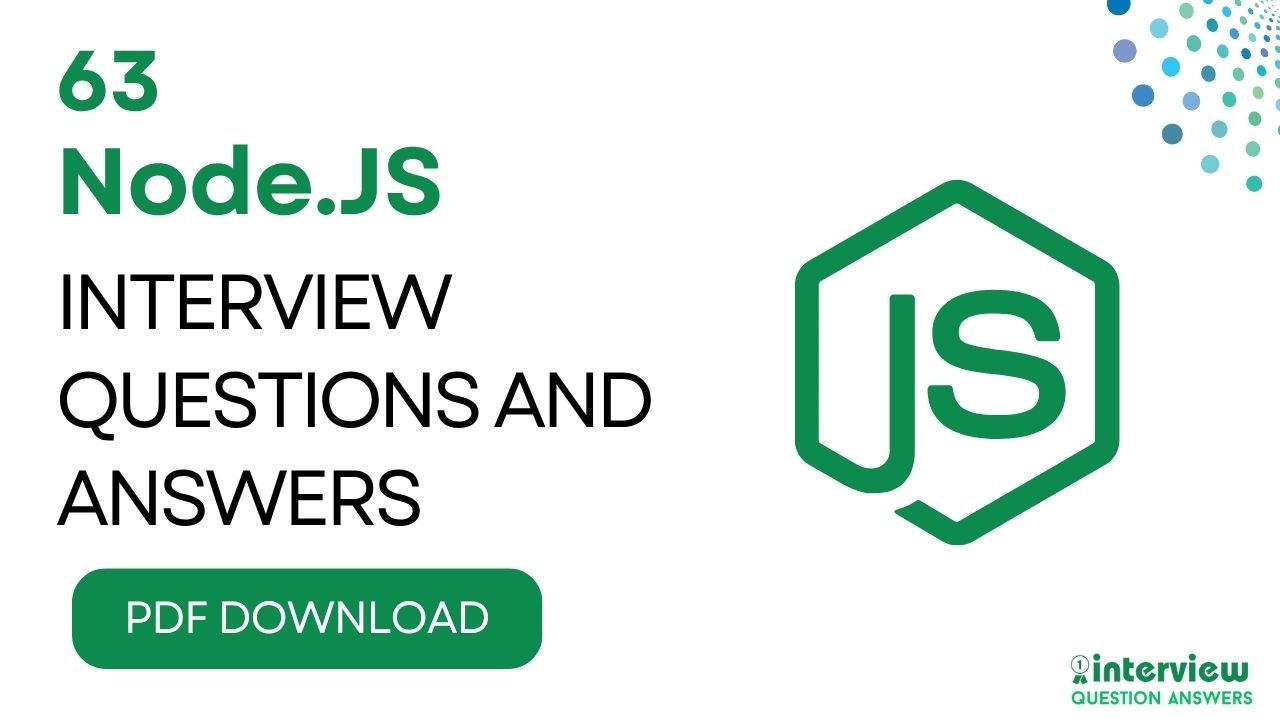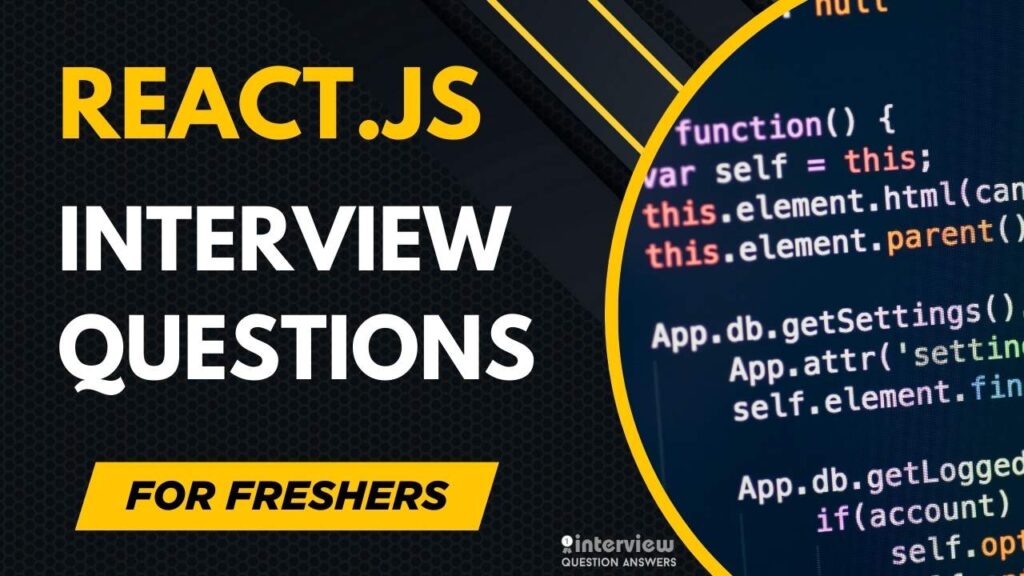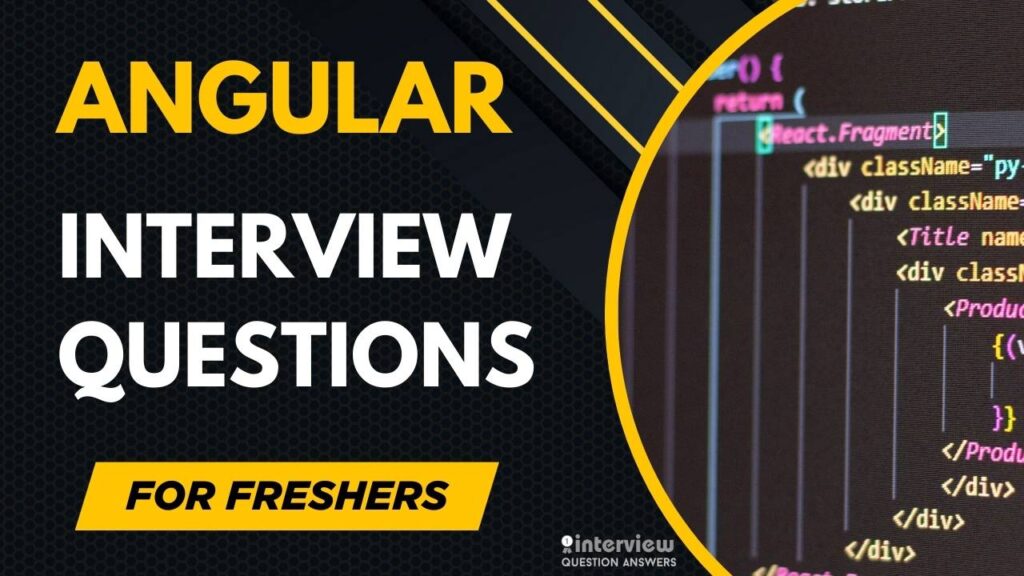Node.js is huge in web development right now, especially when you need to build backend systems that can handle lots of users without slowing down. What makes it special is how it handles multiple tasks at once without getting stuck, it runs on a single thread, and you get to use JavaScript for everything. This makes it perfect for apps that need to work in real-time think chat apps, APIs that respond instantly, or streaming platforms.
When you’re interviewing for Node.js jobs, they’re going to test two main things, do you really understand how Node.js works under the hood, and can you actually build stuff with it.
They’ll ask about frameworks like Express, how you handle code that doesn’t run right away (async stuff), fixing performance problems, and writing code that won’t break when real users start using it. We put together this list of interview questions to help you get ready.
Table of Contents
NodeJS Interview Questions and Answers for Freshers
Que 1. What is Node.js and how is it different from JavaScript?
Answer:
Node.js is a runtime environment that allows JavaScript to be executed outside the browser, typically on the server side. While JavaScript was originally used for client-side scripting, Node.js enables backend development using JavaScript. It uses the V8 engine from Chrome and supports non-blocking I/O operations.
Que 2. Explain the concept of event-driven programming in Node.js.
Answer:
Node.js uses an event-driven architecture where the flow of the program is determined by events such as user actions or messages from other programs. The core idea is that the system responds to events using callback functions.
Que 3. What are the advantages of using Node.js?
Answer:
- Asynchronous and non-blocking I/O
- Fast execution using V8 engine
- Single programming language for full stack
- Active community support
- Scalable for microservices
Que 4. What is the purpose of the package.json file?
Answer:
The package.json file is the metadata file of a Node.js project. It includes information like the project’s name, version, description, dependencies, scripts, and more. It’s used to manage and install project dependencies using npm.
Que 5. How do you export and import modules in Node.js?
Answer:
To export a function or variable:
// math.js
module.exports.add = (a, b) => a + b;To import it in another file:
const math = require('./math');
console.log(math.add(2, 3));Que 6. What is the difference between require and import in Node.js?
Answer:
requireis CommonJS syntax, used by default in Node.js.importis ES6 module syntax, and requires setting"type": "module"in package.json.
Que 7. What is the Event Loop in Node.js?
Answer:
The Event Loop handles asynchronous operations in Node.js. It continuously checks the call stack and task queues, executing callbacks when the stack is clear.
Que 8. How does Node.js handle asynchronous I/O?
Answer:
Node.js uses non-blocking I/O and the event loop to manage asynchronous operations like file reads and API calls. It allows the server to process multiple requests without waiting for one to finish.
Que 9. What are callbacks in Node.js?
Answer:
Callbacks are functions passed as arguments to other functions, executed after the completion of a task. They’re commonly used in async operations.
Example:
fs.readFile('file.txt', 'utf8', function(err, data) {
if (err) throw err;
console.log(data);
});Que 10. What are Promises and how are they used?
Answer:
Promises represent the future result of an asynchronous operation. They help in writing cleaner async code and avoid callback hell.
Example:
fetch(url)
.then(res => res.json())
.then(data => console.log(data))
.catch(err => console.error(err));Que 11. What is npm in Node.js?
Answer:
npm (Node Package Manager) is the default package manager for Node.js. It allows developers to install, share, and manage packages and dependencies.
Que 12. How can you create a simple HTTP server in Node.js?
Answer:
const http = require('http');
http.createServer((req, res) => {
res.writeHead(200, {'Content-Type': 'text/plain'});
res.end('Hello World');
}).listen(3000);Que 13. What is middleware in Node.js?
Answer:
Middleware functions are used in frameworks like Express to handle requests and responses. They have access to req, res, and next().
Que 14. What are streams in Node.js?
Answer:
Streams are objects that allow reading or writing data continuously. Node.js has four types of streams: Readable, Writable, Duplex, and Transform.
Que 15. How do you handle exceptions in Node.js?
Answer:
- Use
try...catchfor synchronous code - Use
.catch()with promises - Use error-first callbacks for async code
- Listen to
uncaughtExceptionevent for process-level errors
Que 16. What is the use of the buffer module in Node.js?
Answer:
Buffers handle binary data directly in memory without converting it to strings. They’re useful for processing files, streams, and network protocols.
Que 17. What is the difference between process.nextTick() and setImmediate()?
| Feature | process.nextTick() | setImmediate() |
|---|---|---|
| Timing | Executes after current operation | Executes on the next event loop cycle |
| Use Case | Prioritize task execution | Defer execution |
Que 18. How can you handle file operations in Node.js?
Answer:
You can use the fs module to perform file operations.
Example:
const fs = require('fs');
fs.writeFile('test.txt', 'Hello Node', (err) => {
if (err) throw err;
});Que 19. How do you install and use external packages?
Answer:
Use npm:
npm install lodashThen import in code:
const _ = require('lodash');
console.log(_.capitalize('hello'));Que 20. What is the difference between synchronous and asynchronous methods in Node.js?
Answer:
Synchronous methods block the event loop until the operation is complete, while asynchronous methods allow the event loop to continue running, improving performance and scalability.
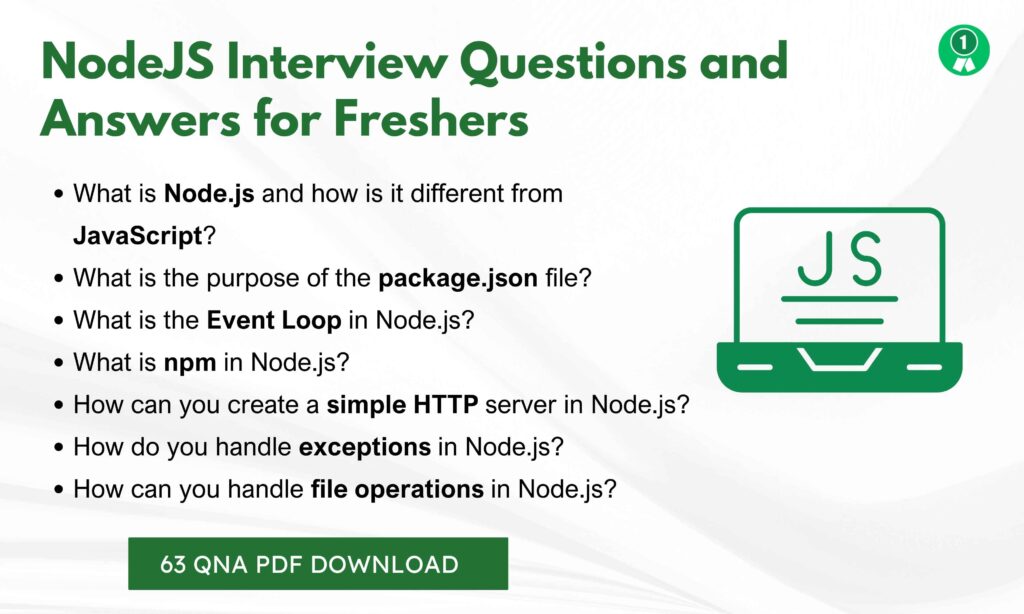
Also Check: Java interview Questions and Answers
Node JS Interview Questions and Answers for Experienced Professionals
Que 21. How does Node.js handle concurrency if it runs on a single thread?
Answer:
Node.js handles concurrency using the event loop and non-blocking I/O. Tasks such as file I/O or network calls are offloaded to the system’s kernel or thread pool (via libuv). Once these tasks are completed, their callbacks are added to the event queue to be executed by the main thread.
Que 22. What are worker threads in Node.js and when should you use them?
Answer:
Worker Threads enable running JavaScript in parallel on multiple threads. They are ideal for CPU-intensive operations like data processing or encryption, which would otherwise block the event loop.
Example:
const { Worker } = require('worker_threads');
new Worker('./worker.js');Que 23. How do you handle large-scale application performance in Node.js?
Answer:
- Use clustering to utilize multiple CPU cores
- Implement caching using Redis or memory
- Apply lazy loading for non-critical modules
- Optimize database queries and use indexes
- Use tools like PM2, New Relic, or Node Clinic to monitor and optimize
Que 24. Explain process.nextTick(), setImmediate(), and setTimeout() differences.
| Method | Execution Order |
|---|---|
process.nextTick() | Executes after the current operation, before I/O events |
setImmediate() | Executes on the next iteration of the event loop |
setTimeout() | Executes after specified delay in ms |
Que 25. How do you handle memory leaks in Node.js?
Answer:
Memory leaks can be caused by:
- Global variables
- Unclosed closures
- Improper cache usage
To detect:
- Use
heapdump,clinic.js, or Chrome DevTools - Monitor memory usage via
process.memoryUsage()
Que 26. What is the role of libuv in Node.js?
Answer:
Libuv is a C library that provides Node.js with:
- Event loop
- Thread pool
- Asynchronous I/O
It abstracts system-specific APIs and powers much of Node’s asynchronous behavior.
Que 27. How do you scale Node.js applications?
Answer:
- Clustering to distribute load across CPU cores
- Load balancers like Nginx or HAProxy
- Horizontal scaling using containers or microservices
- Caching responses and database queries
- Use PM2 for process management and monitoring
Que 28. What is the significance of middleware in Express.js?
Answer:
Middleware functions in Express.js are functions with access to the req, res, and next objects. They are used for:
- Logging
- Authentication
- Error handling
- Modifying request/response objects
Example:
app.use((req, res, next) => {
console.log('Request Time:', Date.now());
next();
});Que 29. How does the EventEmitter work in Node.js?
Answer:EventEmitter allows creating and handling custom events. You can use .on() to listen and .emit() to trigger events.
Example:
const EventEmitter = require('events');
const emitter = new EventEmitter();
emitter.on('log', msg => console.log(msg));
emitter.emit('log', 'Hello Node!');Que 30. How do you implement caching in Node.js?
Answer:
- In-memory caching using
node-cacheor JavaScript Map - Distributed caching using Redis or Memcached
- HTTP caching via headers like
ETag,Cache-Control - Database-level caching using query result caches
Que 31. How can you handle uncaught exceptions and unhandled promise rejections?
Answer:
process.on('uncaughtException', (err) => {
console.error('Uncaught Exception:', err);
});
process.on('unhandledRejection', (reason) => {
console.error('Unhandled Rejection:', reason);
});These should be used to log and gracefully shut down the application, not as a replacement for proper error handling.
Que 32. What is backpressure in Node.js streams?
Answer:
Backpressure occurs when the readable stream is producing data faster than the writable stream can consume. It is managed using the .pipe() method and drain events.
Que 33. Explain the lifecycle of an HTTP request in a Node.js Express app.
Answer:
- Client sends a request
- Express routes the request to matching middleware
- Middleware performs tasks like validation, logging
- Final handler processes the request and sends a response
Que 34. How do you perform authentication and authorization in a Node.js app?
Answer:
- Use Passport.js for strategy-based authentication
- JWTs (JSON Web Tokens) for stateless auth
- Role-based access control using middleware
- OAuth integration for third-party providers
Que 35. How do you manage and isolate configurations for different environments?
Answer:
- Use
.envfiles withdotenv - Set environment-specific variables:
process.env.NODE_ENV - Create separate config files (
config.dev.js,config.prod.js) - Avoid committing secrets; use vaults or secure storage
Also Check: ExpressJS Interview Questions and Answers
NodeJS Interview Questions and Answers for Senior Developers
Que 36. How do you design a scalable Node.js architecture for high-traffic applications?
Answer:
A scalable Node.js architecture includes:
- Load balancer (e.g., Nginx, HAProxy) in front
- Clustering using
clusteror PM2 to utilize multi-core CPUs - Microservices architecture with service discovery
- Message queues like RabbitMQ or Kafka for async processing
- Caching layers using Redis or Memcached
- Database replication and sharding
Que 37. What are the best practices for handling asynchronous operations in Node.js?
Answer:
- Prefer
async/awaitfor better readability - Use
Promise.allfor concurrent executions - Always handle rejections with
try-catchor.catch - Avoid callback hell by using named functions
- Use
util.promisifyfor legacy callback APIs
Que 38. How do you implement rate limiting in a Node.js API?
Answer:
- Use middleware like
express-rate-limit - Implement Redis-based rate limiting for distributed environments
- Define rate-limiting strategy (e.g., IP-based, user-based)
- Set headers like
X-RateLimit-Remainingto inform clients
Example:
const rateLimit = require('express-rate-limit');
app.use(rateLimit({
windowMs: 15 * 60 * 1000,
max: 100
}));Que 39. How would you debug performance bottlenecks in Node.js?
Answer:
- Use Node.js built-in profiler (
--inspect,--inspect-brk) - Use Chrome DevTools for flame charts
- Analyze memory leaks with
heapdump,clinic.js, ormemwatch-next - Use
console.time/timeEndfor manual profiling - Monitor event loop lag using
event-loop-delay
Que 40. What security concerns should be addressed in a Node.js application?
Answer:
- Input validation & sanitization to avoid XSS/SQLi
- Avoid eval and unsafe JSON parsing
- Secure cookies with
httpOnlyandsecureflags - Rate limiting and brute-force protection
- Use libraries like helmet, csurf, and perform dependency audits
Que 41. Explain how streams can be optimized in a data-heavy Node.js app.
Answer:
- Use
stream.pipeline()for cleaner stream composition - Prefer
pause()andresume()to control flow manually - Use
highWaterMarkto adjust buffer thresholds - Process data in chunks to reduce memory footprint
Que 42. How do you manage sessions in a distributed Node.js environment?
Answer:
- Use
express-sessionwith Redis or database as a store - Avoid in-memory sessions in multi-instance setups
- Use sticky sessions if session data is stored in memory (not recommended)
- Implement stateless auth (JWT) when possible for scalability
Que 43. What is the difference between spawn, exec, and fork in Node.js?
| Method | Description | Use Case |
|---|---|---|
| spawn | Launches a new process with streams | Large data streams |
| exec | Executes a command in shell, buffers output | Small output |
| fork | Spawns a new Node.js process with IPC channel | Child process communication |
Que 44. How would you handle background jobs and queues in Node.js?
Answer:
- Use libraries like Bull, Agenda, or Kue
- Queue tasks for email, image processing, reports
- Use Redis for job storage and pub/sub
- Monitor job status, retries, and failures using dashboard tools
Que 45. How can you ensure code quality and maintainability in large Node.js codebases?
Answer:
- Follow modular structure and SOLID principles
- Use TypeScript or JSDoc for type safety
- Enforce linting rules with ESLint
- Write unit tests with Jest or Mocha
- Maintain documentation and follow consistent naming conventions
Que 46. What are some common pitfalls with Promises and async/await in Node.js?
Answer:
- Not using
try/catchwithasync/await - Missing
awaiton a Promise - Using
awaitinside loops (usePromise.allinstead) - Forgetting to return a Promise in middleware
Que 47. How do you secure communication between microservices in Node.js?
Answer:
- Use mutual TLS (mTLS) or signed JWTs for auth
- Encrypt data using HTTPS and secure tokens
- Use API Gateway for access control and rate limiting
- Validate all incoming requests (headers, tokens, IP)
Que 48. How do you enforce versioning in Node.js APIs?
Answer:
- Use URI versioning:
/api/v1/resource - Use header-based versioning:
Accept: application/vnd.myapp.v1+json - Maintain separate route handlers or modules for each version
- Clearly deprecate old versions with response headers
Que 49. What is Domain-Driven Design (DDD) and how can it be applied in Node.js?
Answer:
- DDD helps model complex domains by separating business logic
- Structure code into layers: Domain, Application, Infrastructure
- Use services and repositories to abstract database and logic
- Helps maintain clean, testable, and scalable architecture
Que 50. How do you test asynchronous code in Node.js?
Answer:
- Use async functions with
awaitinside test cases - Use
done()callback in Mocha or Jest for callback-based tests - Mock external calls using libraries like nock, sinon
- Use
supertestfor HTTP route testing in Express
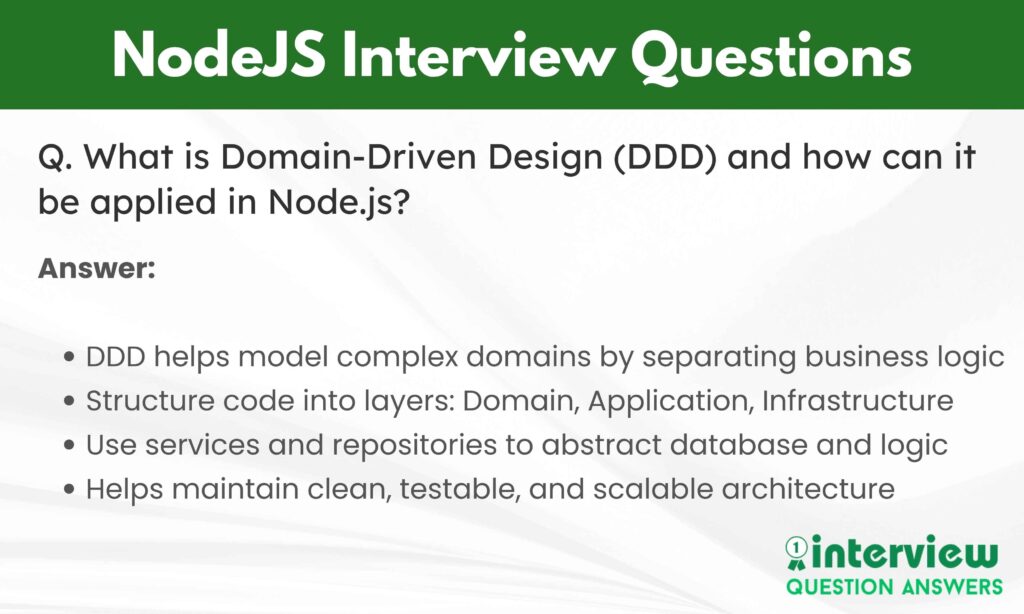
Also Check: React JS Interview Questions and Answers
Common NodeJS Interview Questions and Answers
Sure! Here are 13 more Common Node.js Interview Questions and Answers, starting from Que 51, and following your requested format—no separators, standard markdown, and including tables/lists/code blocks where needed.
Que 51. How does the Node.js event loop work?
Answer:
The event loop is the heart of Node.js’ asynchronous behavior. It handles non-blocking operations by offloading them to the system or a thread pool and listens for their completion to push the callback onto the event queue.
Phases of the event loop:
- Timers
- Pending callbacks
- Idle/prepare
- Poll
- Check
- Close callbacks
It continues in this cycle as long as there are callbacks or I/O operations to handle.
Que 52. What is the difference between process.nextTick() and setImmediate()?
| Feature | process.nextTick() | setImmediate() |
|---|---|---|
| Execution | Before the next event loop tick | On the check phase of the loop |
| Priority | Higher | Lower |
| Use Case | Immediate microtask scheduling | Deferring execution until current I/O completes |
Que 53. How can you prevent callback hell in Node.js?
Answer:
- Use named functions instead of anonymous ones
- Utilize Promises and
async/await - Modularize code by breaking into smaller functions
- Use control flow libraries like
async
// Before (Callback Hell)
fs.readFile('file.txt', function(err, data){
if(err) throw err;
processFile(data, function(err, result){
saveFile(result, function(err){
console.log('Done');
});
});
});
// After (Promise/Async)
async function handleFile() {
const data = await fs.promises.readFile('file.txt');
const result = await processFile(data);
await saveFile(result);
console.log('Done');
}
Que 54. How is middleware used in Express.js?
Answer:
Middleware functions in Express.js are functions that have access to the request, response, and next objects. They are used to:
- Modify the request or response
- Perform logging, authentication, validation, etc.
- End the request-response cycle or pass control to the next middleware
Example:
app.use((req, res, next) => {
console.log('Request received');
next();
});
Que 55. How do you handle file uploads in Node.js?
Answer:
- Use the
multermiddleware for Express - Configure disk or memory storage
- Define limits for file size and type
const multer = require('multer');
const upload = multer({ dest: 'uploads/' });
app.post('/upload', upload.single('file'), (req, res) => {
res.send('File uploaded');
});
Que 56. What are environment variables in Node.js and how are they managed?
Answer:
Environment variables are used to store config outside the code. They are accessed using process.env.
Commonly managed using:
.envfiles withdotenvpackage- System or CI/CD environment settings
require('dotenv').config();
console.log(process.env.DB_HOST);
Que 57. How do you manage dependencies in Node.js?
Answer:
- Using
package.jsonfor declaring dependencies - Install with
npm installoryarn - Use
devDependenciesfor dev tools like linters/test frameworks - Lock files (
package-lock.jsonoryarn.lock) ensure consistency
Que 58. How would you implement logging in a Node.js application?
Answer:
- Use logging libraries like
winston,pino, orbunyan - Set up log levels (info, warn, error)
- Support log rotation and external logging services
const winston = require('winston');
const logger = winston.createLogger({
transports: [new winston.transports.Console()]
});
logger.info('Server started');
Que 59. What is a memory leak in Node.js and how do you detect it?
Answer:
A memory leak occurs when memory that is no longer needed isn’t released. It causes performance issues or crashes.
Detection tools:
- Chrome DevTools (heap snapshots)
clinic.jsheapdumpfor capturing and analyzing memory usage
Que 60. What is the purpose of the cluster module in Node.js?
Answer:
The cluster module enables spawning child processes (workers) that share the same server port. It helps to:
- Utilize multiple CPU cores
- Improve application throughput
const cluster = require('cluster');
const http = require('http');
if (cluster.isMaster) {
cluster.fork();
cluster.fork();
} else {
http.createServer((req, res) => res.end('Hello')).listen(3000);
}
Que 61. How do you handle cross-origin requests (CORS) in Node.js?
Answer:
- Use
corsmiddleware in Express - Manually set CORS headers
const cors = require('cors');
app.use(cors({
origin: 'https://example.com',
methods: ['GET', 'POST']
}));
Que 62. What is the difference between require() and import in Node.js?
Answer:
| Feature | require() | import |
|---|---|---|
| Syntax | CommonJS | ES Modules |
| Support | Default in Node.js | Enabled via "type": "module" |
| Dynamic Usage | Can be used dynamically | Static only |
| File Extensions | Optional | Often required |
Que 63. How do you create and use a custom event in Node.js?
Answer:
const EventEmitter = require('events');
const emitter = new EventEmitter();
emitter.on('userLoggedIn', (user) => {
console.log(`Welcome ${user}`);
});
emitter.emit('userLoggedIn', 'Alice');Also Check: Java OOPs Interview Questions
NodeJS Interview Questions PDF
Want to study offline or save these questions for later?
This PDF includes, most asked interview questions and detailed answers with examples. Perfect for last-minute revision and in-depth preparation.
FAQs: NodeJS Interview Questions
What is the role of a Node.js developer?
A Node.js developer builds scalable server-side applications using JavaScript. Their responsibilities include developing RESTful APIs, managing databases, implementing real-time features, and ensuring performance, security, and efficiency in backend systems.
What challenges do candidates face during a Node.js interview?
Candidates often face questions related to asynchronous programming, callback vs promise vs async/await, event loop internals, middleware handling in Express.js, and API performance optimization. Many struggle with debugging asynchronous issues and structuring backend architecture.
What are common job challenges for Node.js developers?
Node.js developers frequently deal with concurrency issues, error handling in asynchronous flows, memory leaks, managing large-scale API traffic, and integrating with third-party services. Writing secure and optimized code while maintaining scalability is a constant demand.
How important is database and DevOps knowledge for Node.js roles?
Very important. Node.js developers often interact with databases like MongoDB or PostgreSQL and need to understand how to connect, query, and optimize them. Basic DevOps knowledge, like CI/CD, Docker, and cloud deployments, is also valuable in full-stack or backend roles.
What is the average salary of a Node.js developer in the USA?
In the USA, Node.js developers typically earn between $90,000 and $130,000 per year. Senior developers or full-stack engineers with Node.js experience can earn over $140,000 annually, especially in tech hubs or SaaS companies.
Which top companies hire Node.js developers?
Companies like Netflix, Uber, PayPal, LinkedIn, Trello, Walmart, and tech startups widely use Node.js for backend development. It’s especially popular among companies building real-time applications, APIs, or microservices.
Why is interview preparation crucial for Node.js roles?
Proper interview preparation helps candidates demonstrate deep understanding of Node.js architecture, async patterns, and performance tuning. Practicing real-world scenarios, building sample projects, and reviewing core modules and Express.js features greatly improves interview success.
Conclusion
Understanding the concepts of Node.js is essential for performing well in interviews. These questions are designed not only to help you revise key topics but also to simulate the kind of in-depth discussions that often occur in real technical interviews. Be sure to practice writing code, optimizing performance, and designing robust APIs, these are the areas interviewers love to explore.

